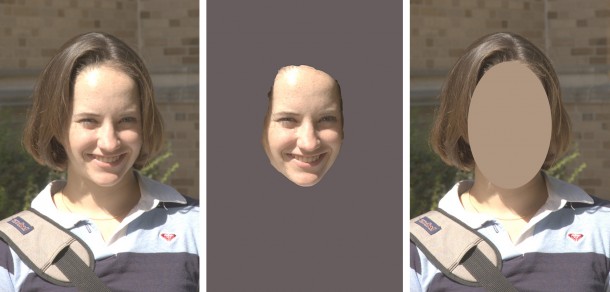NIST: Facial recognition should go beyond the boundaries of face
12 November, 2013
category: Biometrics
Facial features have long been considered sufficient for recognition and identification of an individual. However, a new report from the National Institute of Standards and Technology (NIST) suggests that the use of facial recognition for identity verification could benefit by adding identifiers beyond the boundaries of the face.
The study was published online in the journal of Psychological Science by researchers at the University of Texas at Dallas and NIST. It details a series of experiments that demonstrate potentially valuable biometric data for facial recognition systems. The recognition study examined three types of images for comparison: a subject’s face and upper body, the subject’s face alone, and the subject’s upper body with the face masked.
It is believed that with the addition of the upper body, identification systems can draw upon more data in the search for a match, a sentiment that has been echoed following the NIST study. NIST conducted a series of experiments, wherein researchers showed participants pairs of images of either the same person or two different people, prompting participants to determine if the photos matched or not. The study team purposely selected a subset of image pairs that automated face recognition systems could not recognize.
Study participants were presented with two distinct scenarios. The first saw participants compare the original images containing the face and upper body with faces visible. The second case, however, saw participants compare complete images of the upper body and face with another upper body image with a masked face. In both cases, human accuracy remained constant, proving that participants primarily made matches based on the common thread, the upper body features.
“For twenty years, the assumption in the automatic face recognition community has been that all important identity information is in the face,” says Jonathon Phillips, electronics engineer at NIST and a co-author of the study. “These results should point us toward exploring new ways to improve automatic recognition systems by incorporating information about the body beyond the face.”
See NIST’s website for more on the Face Vendor Recognition Test.




